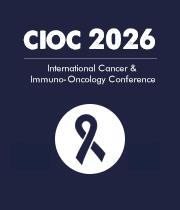Title : Feasibility and impact of music-based interventions on quality of life among patients undergoing infusion therapy in a community center: A pilot study
Abstract:
Introduction: Systemic cancer therapies, including chemotherapy and immunotherapy, often contribute to substantial symptom burden and psychosocial distress, negatively affecting patients’ quality of life (QoL). Complementary and integrative therapies—particularly music-based interventions—have demonstrated potential to alleviate anxiety, depression, and pain, thereby enhancing emotional well-being and treatment tolerance.
However, the workflow integration and logistic feasibility of music therapy in community oncology infusion centers remain underexplored. This pilot study compared two modalities of music therapy—live interactive music versus meditative music with guided relaxation—while assessing the practicality of incorporating such interventions into the infusion center.
Materials and Methods: This single-center study was conducted at Englewood Hospital Infusion Center (April 2024-April 2025). The study was designed to evaluate symptom relief outcomes and feasibility of embedding a structured music-therapy program into routine infusion workflows.
Participants: Eligible participants were adults (>18 years) with clinical or pathologically confirmed cancer, able to provide oral informed consent and were receiving systemic therapy.
Intervention Protocol: Board certified music therapists helped randomize the patients, however if patients expressed a preference of therapy upfront they were not randomized.
- Live interactive music-personalized live singing, song writing, lyric analysis, recorded music listening and guitar playing
- Meditative relaxation focused music- improvised soft guitar music accompanied by verbal guidance through progressive muscle relaxation and mindful breathing Sessions were coordinated with nursing and infusion staff to ensure seamless delivery without disrupting medical care. Both interventions were conducted within standard clinical operations, demonstrating real-world applicability.
Data Collection: Pre- and post-intervention questionnaires measured anxiety, depression, pain, and nausea using validated scales. Demographic and clinical data were recorded. Feasibility measures included recruitment rate, barriers and intervention adherence, and patient satisfaction.
Statistical Analysis: Within-group and between-group comparisons were conducted using exact binomial tests, McNemar's Chi-square tests, and Wilcoxon Signed-Rank tests, with significance defined as p<0.05.
Results: Fifty-six participants enrolled: 39 in live music therapy arm and 17 in meditative music therapy arm. While the study arms were unequal due to logistic constraints (patient preference, scheduling), enrollment proceeded smoothly within the structure of the infusion workflow.
Both groups demonstrated significant within-group reductions in anxiety (p<0.01) and depression (p<0.05) following the intervention, with no adverse events reported. Between-group comparisons suggested a trend toward greater anxiety reduction in the liver music arm and slightly higher pain reduction in the meditative music arm, though these were not statistically significant.
Feasibility outcomes were highly favorable: session implementation required minimal workflow adjustments, and >80% of participants reported positive satisfaction with the intervention experience
Discussion: This pilot study demonstrated feasibility and acceptability of operationalizing music-therapy interventions for patients undergoing infusion therapy within a community oncology setting. High patient engagement, strong staff cooperation, and minimal disruption to clinical care underscored the practicality of embedding music therapy in the infusion workflow.
Although unequal arm sizes limited some analysis, there were meaningful improvements in emotional well-being noted. The successful integration of this program within a functioning infusion center highlights the potential for broader implementation of music based supportive care in similar outpatient oncology centers.



